Yesterday was China’s Children’s Day, a holiday specifically for children. As we’ve mentioned before, there are some cultural differences in how Chinese children are raised, especially on being conditioned not to say “I love you” or being raised under extremely strict parents. However, another cultural difference is the games and toys that children (and adults!) play with in China.
While iPads, Gameboys and Playstations are all the rage now, they usually aren’t allowed in many school yards. These items are also not available to kids and teenagers in many rural districts. So, what games do the kids in China play in their spare time?
We’ve compiled a list of traditional Chinese toys and games:
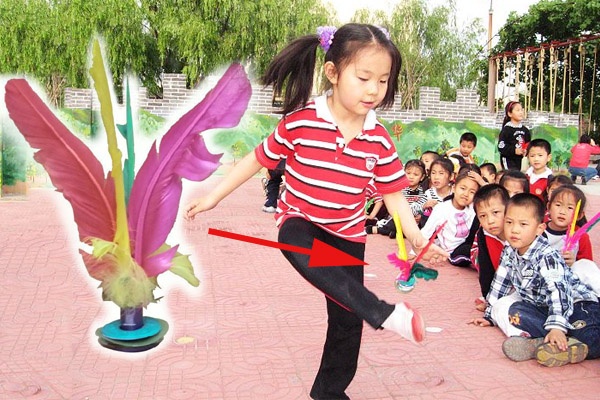
While the term “shuttlecock” usually refers to the ball in badminton, it is also often used to refer to this feather-covered toy. The shuttlecock is essentially a weighted hacky-sack, and is passed from foot to foot by kicking. The object is to keep it from touching the ground. Besides being played in the schoolyard, it is also very popular among the senior citizens as a way to keep their limbs active.
Shuttlecock has evolved into a formal sport of it’s own. It is played with a net, and is similar to volleyball if volleyball was played primarily with feet.
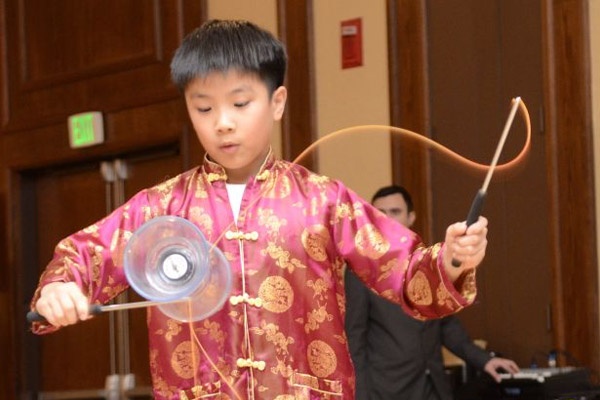
Also known as diabolo, the Chinese Yo-yo is an hourglass shaped item that is spun on a string. The string is connected to two hand sticks. The way to get the diabolo to balance and rotate is to move the hand sticks up and down alternatively. Because of this, the Chinese refer to the playing of the diabolo as, “抖空竹”, or “shake the diabolo.” Players with higher skill can toss the yo-yo up and catch it on the strings, or manipulate the strings into patterns while keeping the yo-yo spinning.
空竹 literally means “empty bamboo.” Diabolos were originally constructed out of bamboo, and the cups were hollow in the middle.
The Chinese Yo-Yo is also used frequently in performances, often where acrobatics are involved. The famous acrobatic troupe, Cirque Du Soleil, employs Chinese Yo-yos in several of their acts.
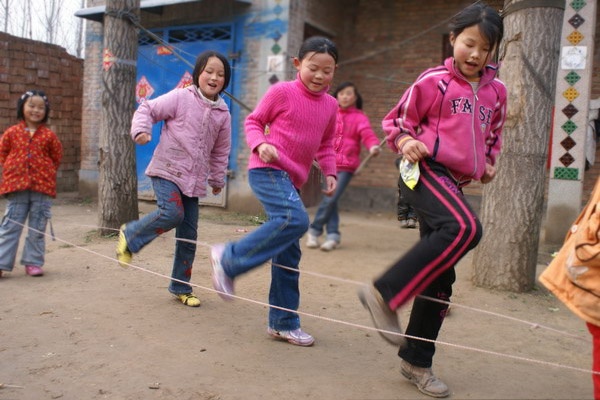
The Chinese jump rope resembles more of a giant stretched out rubber band. It is a thin piece of elastic rope that is loops around two pairs of legs.
Unlike the Western jump rope, the object of this game is to hook your legs into the rope to form loops and patterns in a certain sequence. This is often accompanied by a rhyme or song. As each level is completed, the rope is moved higher, making the patterns more difficult to complete.
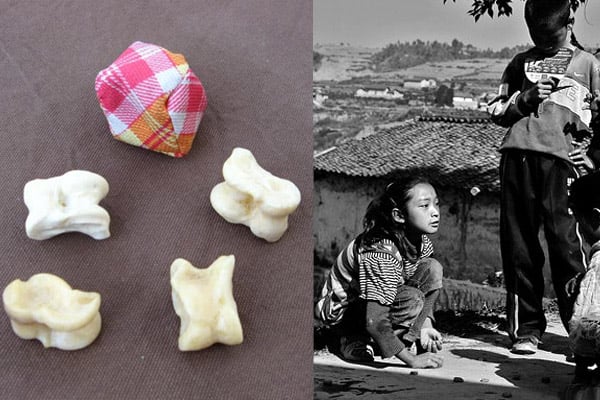
This is a game very similar to “jacks” in Western culture. “拐” refers to a piece of bone, often from the thigh joint of a sheep or pig. Children often save them from the dinner table. Just like jacks, a ball or tiny beanbag is tossed up during play. The rules vary, but one of the main objectives is to “turn” all four bones right side up before you catch the beanbag.
In ancient times, this game was strongly encouraged among young girls in order to practice the nimbleness of their fingers. The more nimble their fingers, the more skilled they would be at the loom and embroidery.
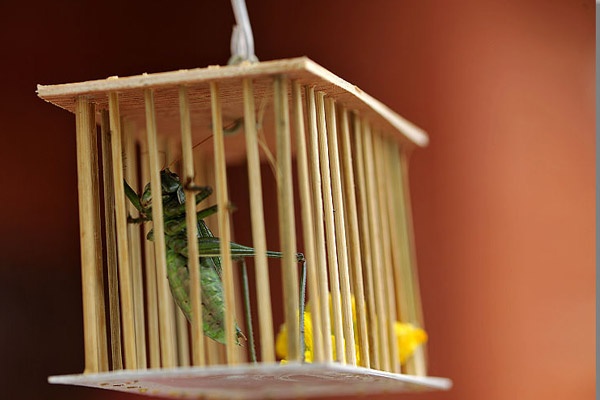
Though not a game, the Guo Guo is often seen as a toy for young children. Thought to be symbols of good luck, these vibrant green crickets are often caught and trapped in whimsical containers. They are known for their melodious “singing.” Some containers are specifically designed to amplify these tunes. During the summer months, you can often see them being sold at markets in China.
“Crickee,” the lucky cricket that Mulan had in the Disney movie, was most likely a Guo Guo. (Want to know more odd facts about Mulan? Read our blog post.)
The Guo Guo is one of two insects depicted on the famous Qing Dynasty Jadeite Cabbage carving. The other insect is a katydid. The sculpture is on display at the National Palace Museum in Taiwan.
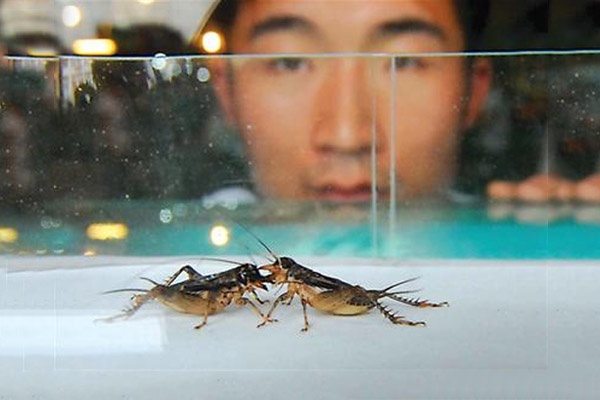
This particular game may offend some animal lovers, but it is quite popular in rural areas of China. Crickets are put in an enclosed “arena” (usually a clear bowl or box.) The players agitate their crickets by prodding the crickets’ antenna with a stick, so they become aggressive. The crickets are made to fight until one runs from the other, stops chirping, or is thrown from the ring or even consumed by the other cricket.
Many adults also participate in cricket fighting, and some even breed crickets specifically for battle. The cricket battling season takes place between August and September, as these insects rarely live through the fall season.
LANGUAGE NOTE
You may notice that the word “斗” for cricket battling (斗蛐蛐) looks similar to “抖” for playing the Chinese yo-yo (抖空竹.)
斗 dòu (fourth tone) means “to fight.” It is also used in the term for bullfighting, which is “斗牛 (dòu niú)”
抖 dǒu (third tone) means “to shake.” “颤抖 (chàn dǒu)” means “shiver,” usually in fear or cold.
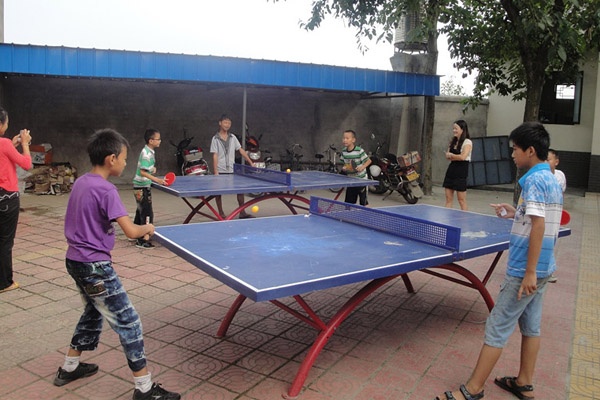
Ping Pong is available in almost every schoolyard. Not only is it a national sport of China, but it is also fairly cheap in terms of setup and supplies. You don’t need to construct or pave a court. The tables used in ping pong are portable, and they can fold up to save space. Ping pong is the most played recreational sport in China, with over 300 million players.
Despite China’s skill in this particular sport, it is actually not a Chinese invention. However, football is. Check out these other odd Chinese inventions.
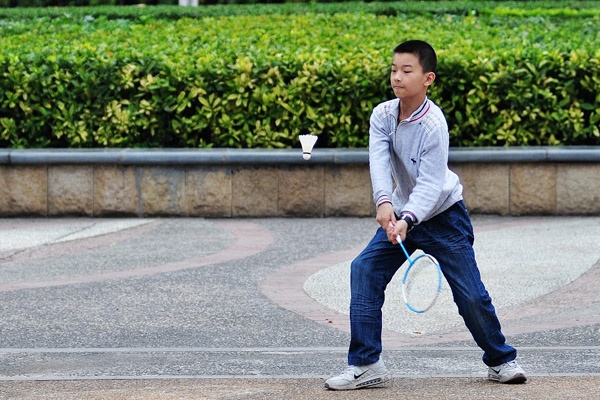
Another relatively cheap sport, badminton is also very popular among Chinese kids. In many schoolyards, it is played without a net, with rules similar to hacky sack. The goal of the game is to avoid letting the ball touch the ground.
Along with ping pong, the Chinese have also dominated the badminton sport at all major world competitions.
Many of our Chinese tutors played these little games while growing up! What games did you play? Have you tried playing any of these?
Let us know in the comments!
Founded in 2004, TutorABC Global, the parent company of TutorABC Chinese, created the first commercially available synchronous learning portal in the world. TutorABC Global offers TutorABC Chinese for Chinese learning. For English learning, it offers TutorABC, and tutorabcJr.
LIKE THIS POST? JOIN Us TO LEARN MORE!
